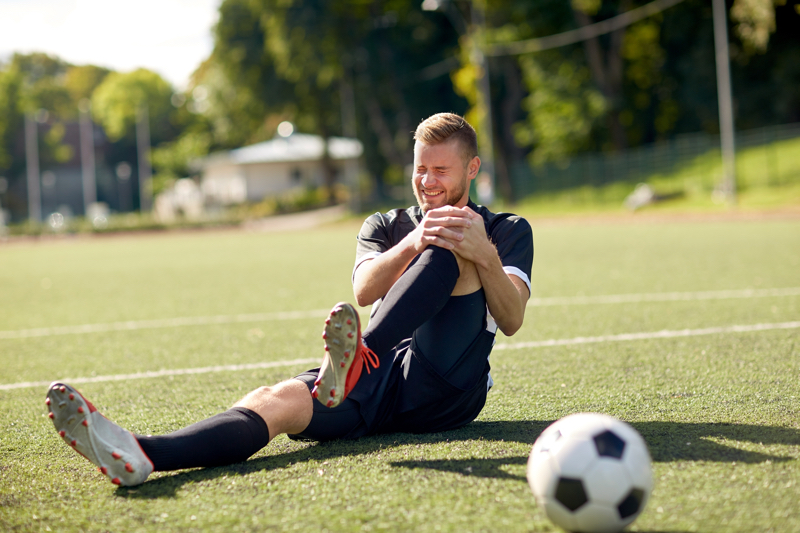As the largest joint in the body, and one with multiple moving parts and connections, common knee injuries are something we deal with often. Some occur from acute trauma when the pain of the injury is definite and sudden, and others are the result of repetitive motion or wear and tear over time. The latter is generally suspected following a period of gradually increased pain, weakness, and/or stiffness during and after activity.
Knee pain is one of the most common reasons people seek sports chiropractic care. Following the well-known RICE method (Rest, Ice, Compression & Elevation) for the initial relief of swelling and pain, sports chiropractic offers a number of diagnostic and rehabilitation therapies to effectively treat acute and chronic knee pain.
* Ultrasound imaging
* Interferential therapy
* Trigger point therapy, soft tissue/deep tissue massage
* Eventual introduction of strengthening and stabilizing exercises to improve mobility & function
These therapies are great non-surgical ways for addressing pain from ligament injuries, meniscus tears, and other common knee-related issues, but also work as a complementary treatment when surgery is required.
Ligament Injuries
The knee has four main ligaments that work together to provide strength and stability during various back-and-forth and side-to-side motions.
* Anterior cruciate ligament (ACL)
* Posterior cruciate ligament (PCL)
* Medial collateral ligament (MCL)
* Lateral collateral ligament (LCL)
Ligament injuries, particularly to the ACL and MCL, are not a rare occurrence among athletes. When any part of the knee is forcibly overextended due to traumatic impact to the joint or an awkward landing during activity, the ligaments can fail to adequately support the motion. When pressed beyond capacity, ligaments can be strained and torn.
The pain, swelling, and bruising experienced are dependent upon the severity of the injury. When dealing with a Type I or II ligament injury, defined as a sprain or partial tear, chiropractic adjustments to the knee joint can help improve functionality and mobility in the area and both encourage quicker healing times and help prevent further damage.
Once completely torn, ligaments often require surgery. In these cases, sports chiropractic care is an invaluable adjunct approach to rehabbing the knee following surgery to offer more complete healing in a shorter time period.
Meniscus tears
A torn meniscus is common in athletes who participate in sports requiring a lot of jumping and twisting or sudden change in direction while running. Volleyball, football, and soccer are good examples. Wear and tear over time, especially when combined with sudden cutting and pivoting motions, can result in a meniscus tear, which can be quite painful. While these injuries can occur on their own, they often accompany ACL injuries.
Mild to moderate meniscus tears, whether degenerative or traumatic, usually don’t require surgery, with patients being told to rest the knee, and treat pain and inflammation while the meniscus calms down. Eventually, physical therapy is introduced to help patients regain mobility.
But instead of just waiting, why not try sports chiropractic care? The meniscus actually responds extremely well to therapies like myofascial release applied to the muscles surrounding the meniscus, dry needling, Active Release Technique, and corrective exercises designed to strengthen the structures of the knee during healing and provide relief and protection from future injury.
Because injuries are inevitable for athletes, sports chiropractic care should be a regular part of any training program. Designed to identify weaknesses in the structure of the knee and the connecting muscles of the leg that lead to pain and injuries, sports chiropractic can assist in the rehabilitation of the knee and get you back into pain-free training.
Even when there is a known knee injury, sports chiropractic care begins with a full-body assessment to identify biomechanic issues — such as poor quadricep strength, gluteal weakness, patellofemoral tracking disorders, and foot over or under pronation — that have potentially led to knee instability, and work to correct those issues while addressing the knee pain.
If you are experiencing new or chronic knee pain, contact Dynamic Sports Medicine today for an evaluation. Training through your pain may lead to more serious issues down the road.









